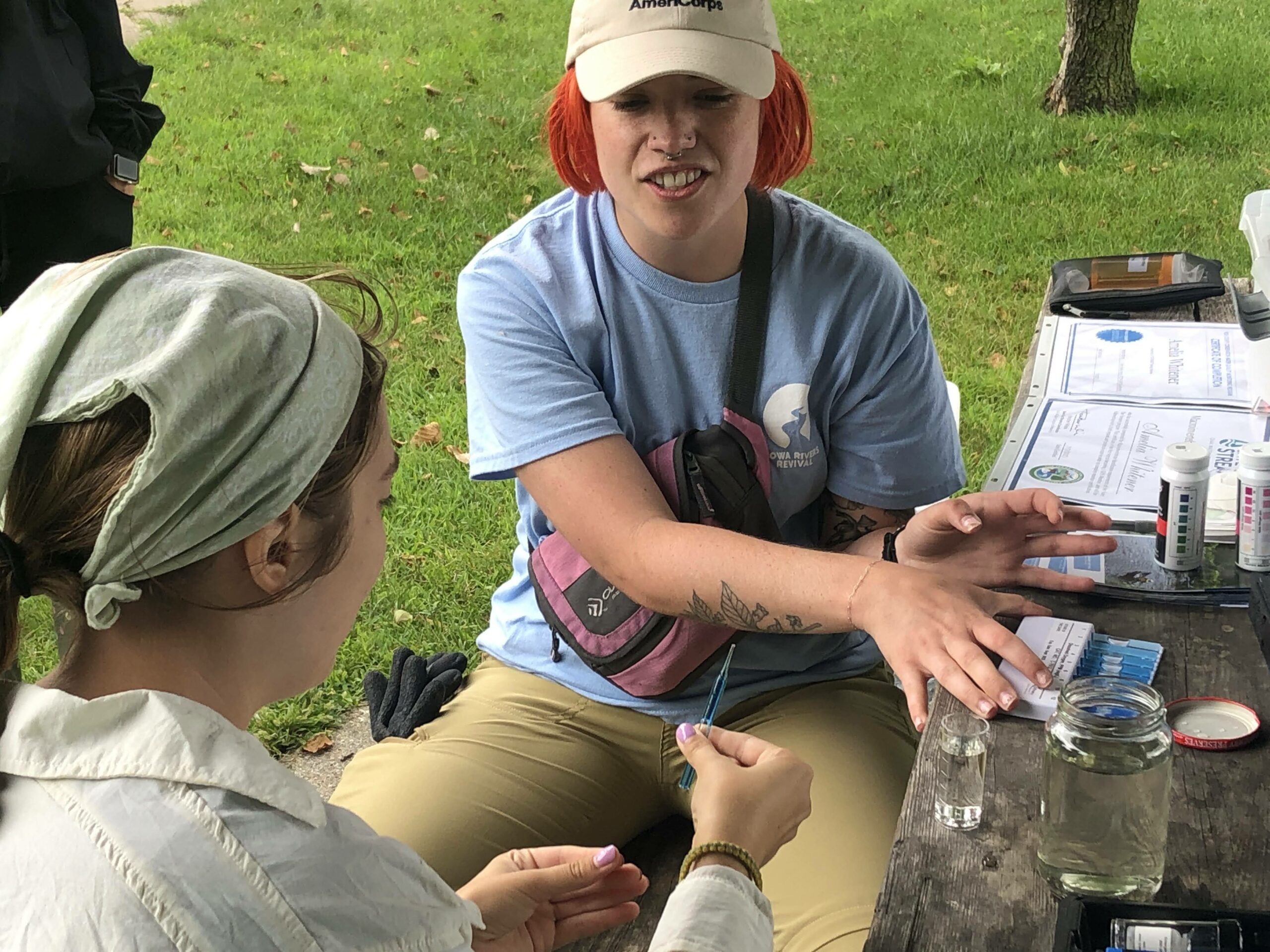Monitoring a stream once or twice a month is a big commitment, but our locally-led water monitoring program (which started in Story County but has expanded to Hamilton County) has no shortage of committed volunteers! The following metrics show the continued growth of the program in size and consistency.
Also, let’s give a shoutout to the people who work behind the scenes to make it happen! Sara Carmichael of Story County Conservation keeps everyone on track and equipped with supplies. Heather Wilson of the Izaak Walton League of America helps train volunteers and has been leading up the new Nitrate Watch initiative. We rely on the IWLA’s Save Our Streams program for training materials and the Clean Water Hub for data entry. In addition to volunteer monitoring, Maryann Ryan and her team at the City of Ames Laboratory Services Division process weekly samples from 3 sites and monthly samples from 15 sites.
2022 Season
Volunteers participating
Sites tested at least once
Sites tested at least 20 times
Data sheets entered in the Clean Water Hub
2023 Season
Volunteers participating
Sites tested at least once
Sites tested at least 20 times
Data sheets entered in the Clean Water Hub
In March, Prairie Rivers will release a report detailing the findings. Here are a few preliminary numbers that give a sense of how 2023 stacks up to the previous year.
2022 Season
Weeks in Drought
E. coli (geomean) at best site
E. coli (geomean) at worst site
%
"Poor" readings in Clean Water Hub
2023 Season
Weeks in drought
E. coli (geomean) at best site
E. coli (geomean) at worst site
%
"Poor" readings in Clean Water Hub
Drought continues to limit where we have flowing water. Sometimes, most of the water in a creek is coming from sewage treatment plants, which are able to remove some pollutants but not others. E. coli bacteria (an indicator of fecal contamination) continues to be high in most waters, likely coming from multiple sources. Looking at E. coli averages (geometric means) for the 2023 recreation season, two swimming beaches in the county met the primary contact recreation standard (126 colonies/100mL) but only 1 of 14 streams with enough data to evaluate did, and three exceeded the secondary contact recreation standard (630 colonies/100mL). Due to restrictive state laws about “credible data”, these sites might appear on a list of “Waters in Need of Further Investigation” but won’t be counted on the 2024 Impaired Waters List.
We continue to work with partners locally and around the state on ways to interpret water quality data and make it more accessible.

